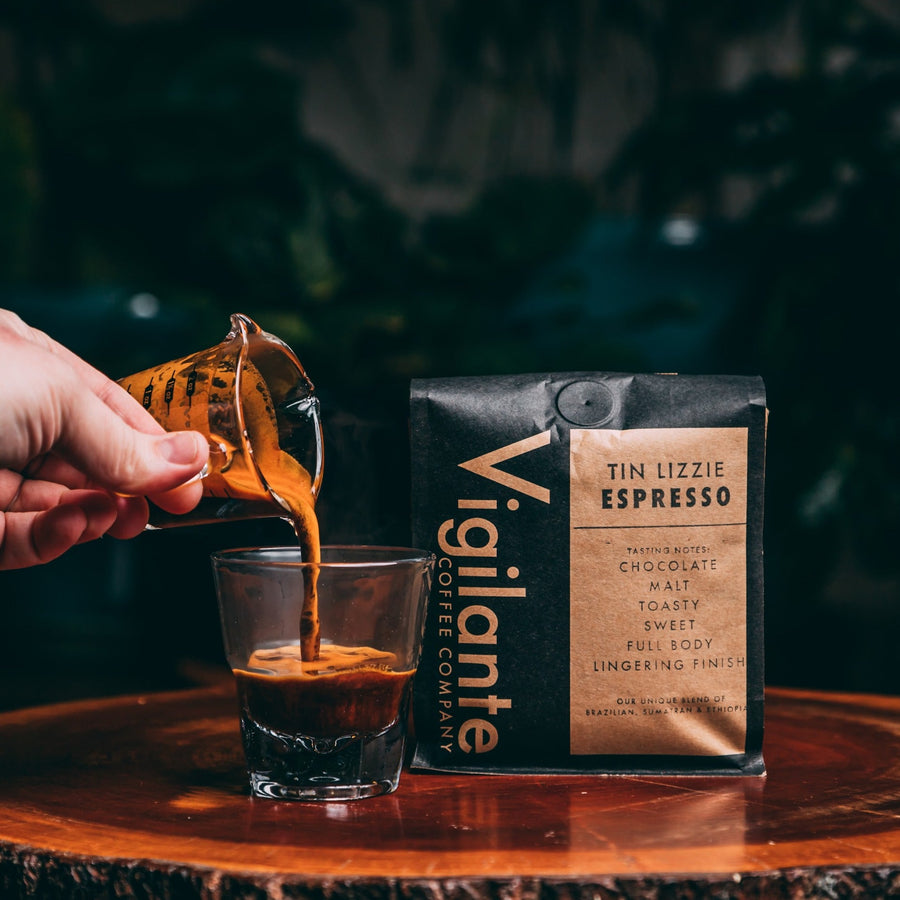Discovering the Abundant Tastes of Coffee Beans: a Deep Dive Into Espresso and Blended Coffee Beans
When you check out the rich flavors of coffee beans, you reveal a complex world where each selection brings its very own character to your cup. As you navigate via the art of espresso and the creativity behind mixed coffees, you'll begin to appreciate the subtleties that make each sip distinct.
The Beginnings of Coffee Beans: Discovering Terroir and Flavor Profiles
When you take a sip of coffee, you're not just delighting in a drink; you're experiencing a rich tapestry of flavors shaped by the beans' origins. Each area generates one-of-a-kind taste accounts affected by environment, altitude, and soil. As an example, beans from Ethiopia often burst with intense, fruity notes, while those from Colombia often tend to provide a balanced, nutty sweet taste.
As you explore different beginnings, you'll observe exactly how terroir-- the ecological elements impacting a plant-- plays a vital function - Single Origin Espresso. The exact same coffee selection can taste drastically various depending upon where it's expanded
When you consider these aspects, you begin to value the intricacy behind your mug. Each sip narrates of the land and the farmers who supported the beans. Next time you indulge, assume concerning the trip your coffee took before it reached your hands, and enjoy those elaborate tastes that reflect its beginning.
Understanding Espresso: The Art and Scientific Research Behind the Mixture
When you think about coffee, it's not nearly the strong taste; it's likewise concerning the techniques that bring it to life. Recognizing how various preparation methods impact preference can change your brewing experience. Allow's discover the intricacies of espresso preparation and discover the distinct flavor accounts that make each mug unique.
Espresso Preparation Techniques
Espresso prep work is both an art and a scientific research, integrating precise techniques with a deep understanding of coffee. To begin, you'll desire to pick top notch, fresh baked beans and grind them finely for optimal removal (Single Origin Espresso). The grind dimension is important; also coarse, and your espresso will be weak, as well great, and it'll be bitter
The result needs to be a rich, velvety coffee with a gorgeous layer of crema on top. With method, you'll understand these techniques.
Taste Profiles Described
The globe of coffee provides an abundant tapestry of flavor accounts that can elevate your coffee experience. When you take that first sip, you'll observe an equilibrium of level of acidity, bitterness, and sweet taste. Each coffee bean brings unique notes, from fruity and floral to nutty and chocolaty. Light roasts often display brilliant acidity and vibrant flavors, while dark roasts existing deeper, bolder tones.
Recognizing these accounts assists you choose the appropriate espresso for your taste. Trying out different blends can disclose unusual mixes. For instance, a well-crafted mix could balance the brilliant notes of an Ethiopian bean with the rich, chocolatey undertones of a Brazilian bean. Welcome the trip of finding espresso's diverse tastes, and you'll change your coffee ritual into an interesting experience.
Handling Techniques: How They Impact Flavor and Aroma
While it could appear that the origin of coffee beans is one of the most substantial consider identifying their flavor and fragrance, the handling techniques utilized post-harvest play a similarly crucial duty. You'll discover that these methods can dramatically alter the last taste profile of your mug.
For circumstances, the washed process eliminates the fruit from the beans before fermentation, typically resulting in a cleaner, brighter flavor. The all-natural procedure leaves the fruit undamaged throughout drying out, resulting in a sweeter, fruitier account.
Other methods, like honey handling, strike an equilibrium, enabling some fruit mucilage to continue to be, giving an unique complexity.
Each handling technique interacts with the beans' inherent features, improving or muting specific tastes and fragrances. When you drink that espresso or blended coffee, keep in mind that the trip from cherry to mug is affected not just by origin yet also by exactly how those beans were refined.
Roasting Techniques: Unlocking the Complete Potential of Coffee Beans
Roasting methods are essential for revealing the full capacity of coffee beans, as they change raw, environment-friendly beans into the aromatic, tasty coffee you take pleasure in. The selection of toasting method-- light, medium, or dark-- substantially affects taste profiles. Light roasts protect the beans' natural level of acidity and fruity notes, while tool roasts equilibrium sweetness and richness. Dark roasts, on the other hand, highlight vibrant, smoky flavors.
A slower roast at reduced temperatures allows for intricate tastes to establish, while a quicker roast can heighten resentment. By mastering these techniques, you'll reveal a globe of taste, raising your coffee experience to new elevations.
The Magic of Blended Coffee: Producing Distinct Taste Experiences
Producing a distinct flavor experience with combined coffee can change your morning ritual right into an exploration of preference. By incorporating various beans from different regions, you can expose a symphony of tastes that raise your cup to brand-new heights. Each blend deals a distinctive profile, balancing acidity, body, and useful content sweetness to produce something really unique.
When you select a blend, you're not just selecting a coffee; you're selecting a journey helpful site throughout varied landscapes and cultures. Try out different combinations permits you to discover your personal faves, whether you enjoy fruity notes or rich, chocolatey touches.

Tasting Notes: Acknowledging the Subtleties in Your Mug
As you sip your coffee, you may see a spectrum of tastes dancing on your palate, each exposing the intricacies of the beans. You may taste the intense acidity similar to citrus or the deep, abundant notes akin to dark chocolate. The sweet taste could evoke honey or caramel, balancing the overall profile magnificently.
Take note of the body of the coffee-- does it really feel light and ventilated, or is it complete and creamy? The finish, too, provides clues; a remaining aftertaste might mean nuttiness or flower touches.

Do not neglect to check out the special characteristics of various beginnings, as each area gives distinctive tastes - Single Origin Espresso. Ethiopian coffees frequently present fruity notes, while Colombian beans might showcase a much more rounded sweet taste. By acknowledging these nuances, you'll deepen your admiration for every cup, boosting your coffee experience to brand-new heights

Brewing Approaches: Maximizing Taste Removal for Every Bean
When you discover the different brewing approaches, you'll find that each technique can significantly influence the flavor account of your coffee. From French press to pour-over, each technique extracts various compounds, boosting or muting specific notes. Using a French press enables oils to remain in the mixture, producing a richer taste, while pour-over stresses clearness and illumination.
Temperature and grind size additionally play necessary functions. A coarser grind works best for cool mixtures, while a fine work is optimal for espresso. Trying out water temperature level-- in between 195 ° F and 205 ° F-- can reveal concealed tastes, too.
Don't ignore steeping time; a quick removal can bring about sour notes, while over-extraction may produce anger. By adjusting these variables, you can make best use of flavor extraction and genuinely boost your coffee experience. Enjoy the journey of finding what approach ideal you can try this out suits your palate!
Often Asked Concerns
What Is the Perfect Water Temperature for Brewing Coffee?
The optimal water temperature level for developing coffee's in between 195 ° F and 205 ° F. If you make use of water that's also warm, you'll over-extract flavors; too cold, and you won't draw out enough. Goal for that pleasant place for the very best mixture!
How Does Work Dimension Affect Coffee Flavor?
Work size considerably affects coffee flavor. Finer grinds extract much more oils and flavors, resulting in a bolder taste, while coarser grinds yield a lighter flavor. Adjusting grind dimension aids you achieve your wanted coffee account.
Exist Wellness Benefits Associated With Drinking Coffee?

What Is the Distinction In Between Arabica and Robusta Beans?
Arabica beans are smoother and sweeter, frequently featuring fruity tastes, while robusta beans are more powerful with a bitter preference and greater caffeine content. You'll discover these distinctions in fragrance and developing experience.
Exactly How Can I Store Coffee Beans for Freshness?
To store coffee beans for freshness, keep them in an airtight container, away from light, warm, and dampness. If you just grind what you require right prior to developing., you'll keep their taste longer.
Checking Out the Rich Flavors of Coffee Beans: a Deep Dive Into Espresso and Blended Coffee Beans.
When you discover the abundant flavors of coffee beans, you discover a complicated world where each selection brings its very own personality to your cup.When you take a sip of coffee, you're not just appreciating a beverage; you're experiencing a rich tapestry of tastes shaped by the beans' beginnings.Roasting methods are important for revealing the complete potential of coffee beans, as they transform raw, green beans right into the fragrant, tasty coffee you enjoy.As you drink your coffee, you may notice a range of tastes dancing on your palate, each disclosing the ins and outs of the beans.